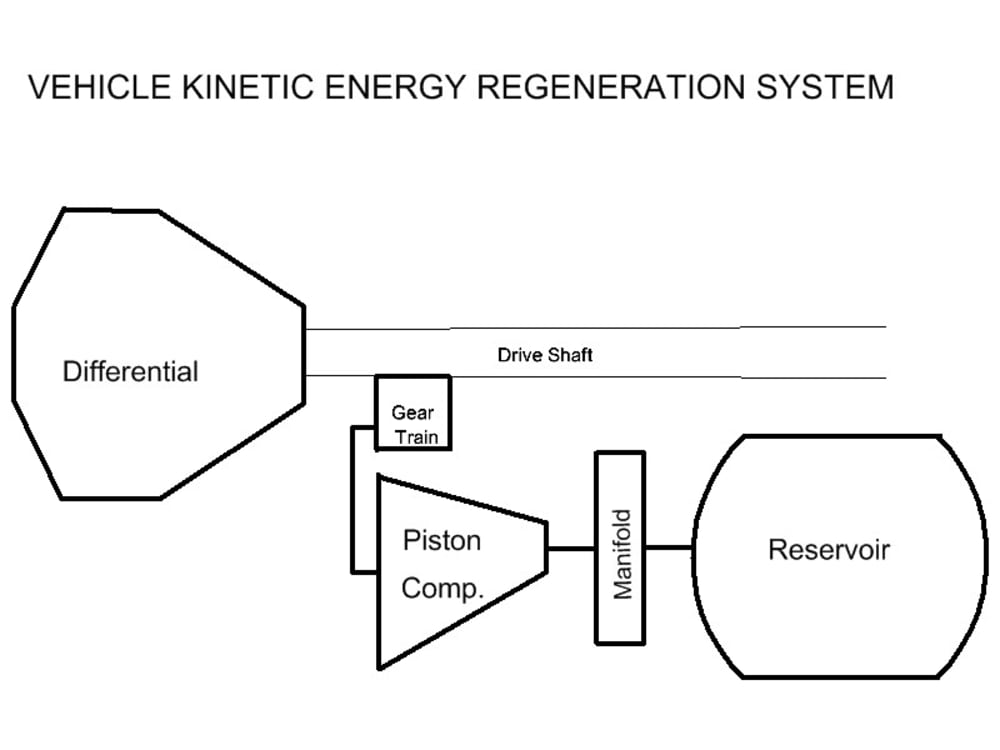Presented system for regenerating automobile kinetic energy loss in deceleration uses a piston engine that as a compressor charges a reservoir and as an engine augments the main engine on acceleration. Effectiveness exceeds that of electric power absorption systems because energy and maximum power absorption are greater while the size, weight and cost are much lower. For example, a Volkswagen Jetta, whose aerodynamic and rolling resistances were determined in road tests, are used in parametric studies, weighs 3260 pounds, decelerating at 0.5 g’s initially dissipates kinetic energy at 195 kW. A 200 kW generator and battery storage are much too large and heavy for automobiles so little of available energy is recovered.
Regeneration System – Attached Figure shows schematic representation of the system. Vehicle decelerates by providing compression power from the drive shaft near the differential in both rear and front-wheel drive vehicles. A gear train clutch disengages the system off duty.
Piston engine is used because its compression ratio is invariant with speed while the flow rate is proportional to speed. In compressor mode the initial flow is very high but in engine mode the flow rate initially is low so that the reservoir pressure can deliver high torque. The one or two cylinder compressor/engine is a motor cycle unit with a camshaft that opens and closes valves on each revolution. Atmospheric air compressed to a volumetric ratio of 12 to 16 to one is exhausted to the reservoir. Piston crowns are shaped to prevent contact with valves. Air is transferred through manifolds with valves so that in compressor mode the intake valve admits atmospheric air while the exhaust valve fills the reservoir. In propulsion mode the intake valve admits compressed air from the reservoir and the exhaust valve releases it to the atmosphere.
The insulated stainless steel reservoir is wrapped in Kevlar to contain debris in case of accidents. Typically, pressures are 650 psig and temperatures are 1200oF.
Operation and Performance – Parametric studies determined system characteristics for:
Vehicle weight = 3260 pounds Drag area = 5.6 ft2 Rolling resistance = 0.011
Total kinetic energy of 392x103 foot-pounds is absorbed by the regeneration system (95%) and rolling and aerodynamic drag (5%)
For 0.5g deceleration from 60 mph compressor displacement is 51 in3, compressed air weighs 1.8 pounds and reservoir volume is 1.7 ft3.
Deployment and Commercialization – The concept uses standard components that will lower development and production costs. Small sizes of components make the system easy to place in production automobiles and easily installed as after-market equipment. .
Energy and Environment - Recovery of kinetic energy to augment acceleration to speed will reduce emissions and consumption of fuels
Like this entry?
-
About the Entrant
- Name:Andrew Wortman
- Type of entry:individual
- Hardware used for this entry:HP desktop computersSoftware used for this entry:Turbocad, Mathcad, Word
- Patent status:none

